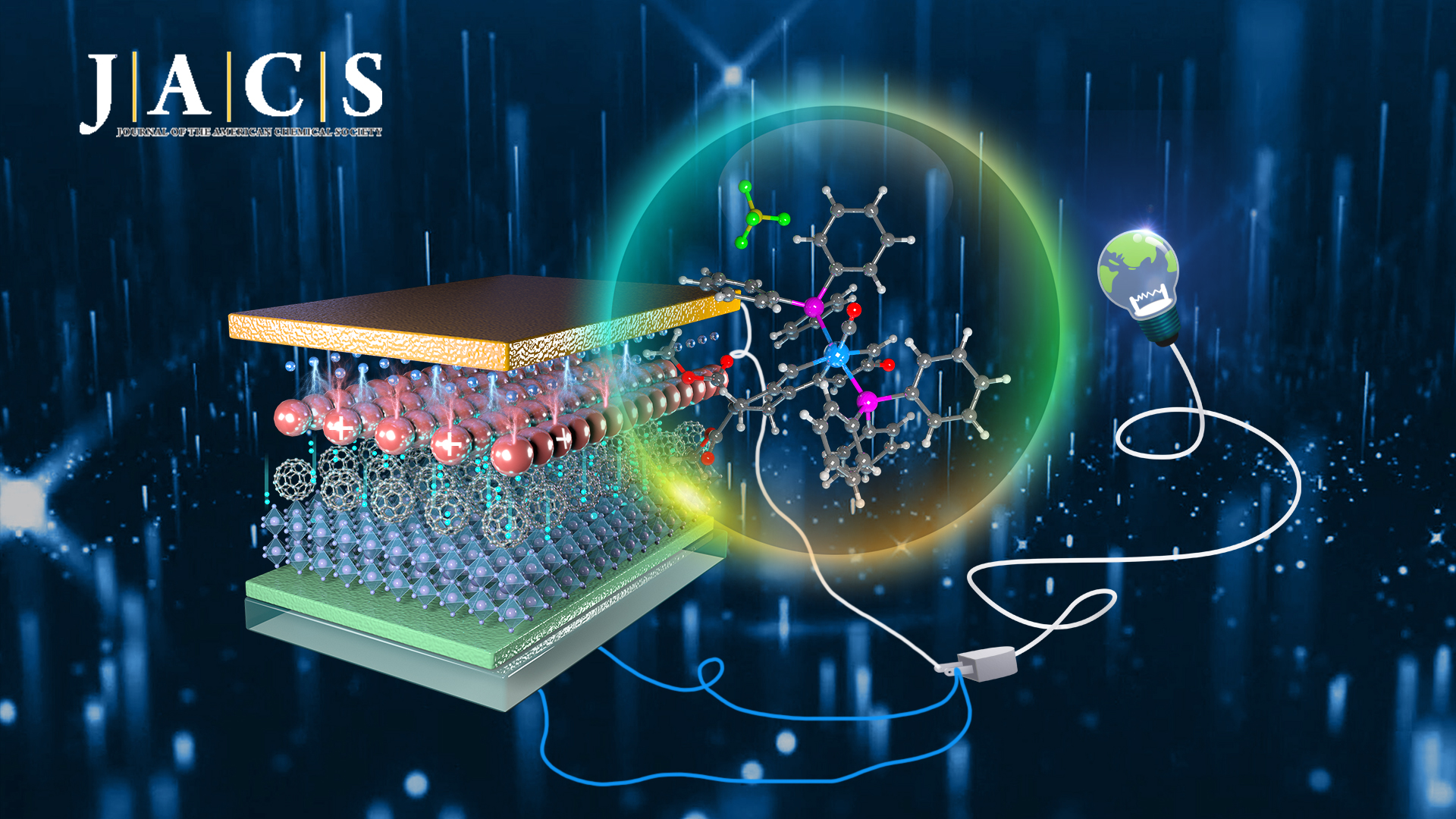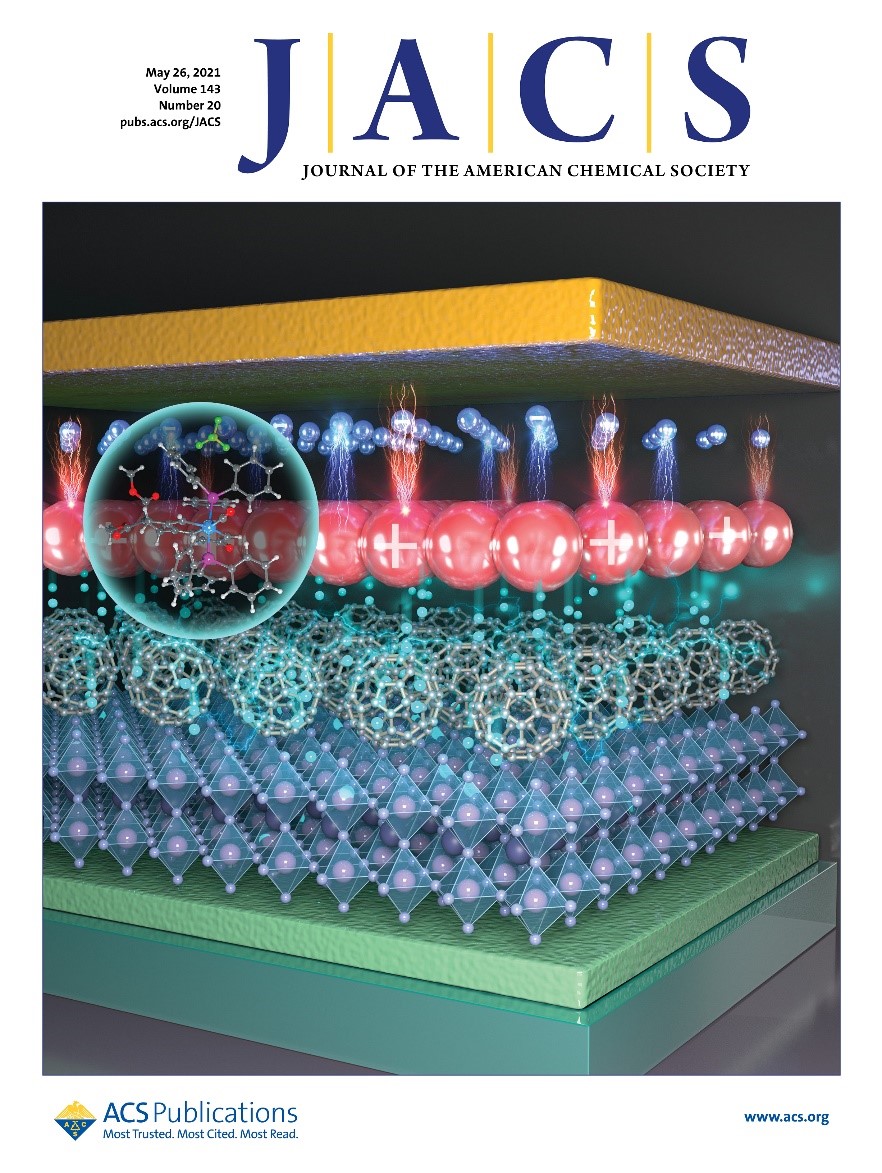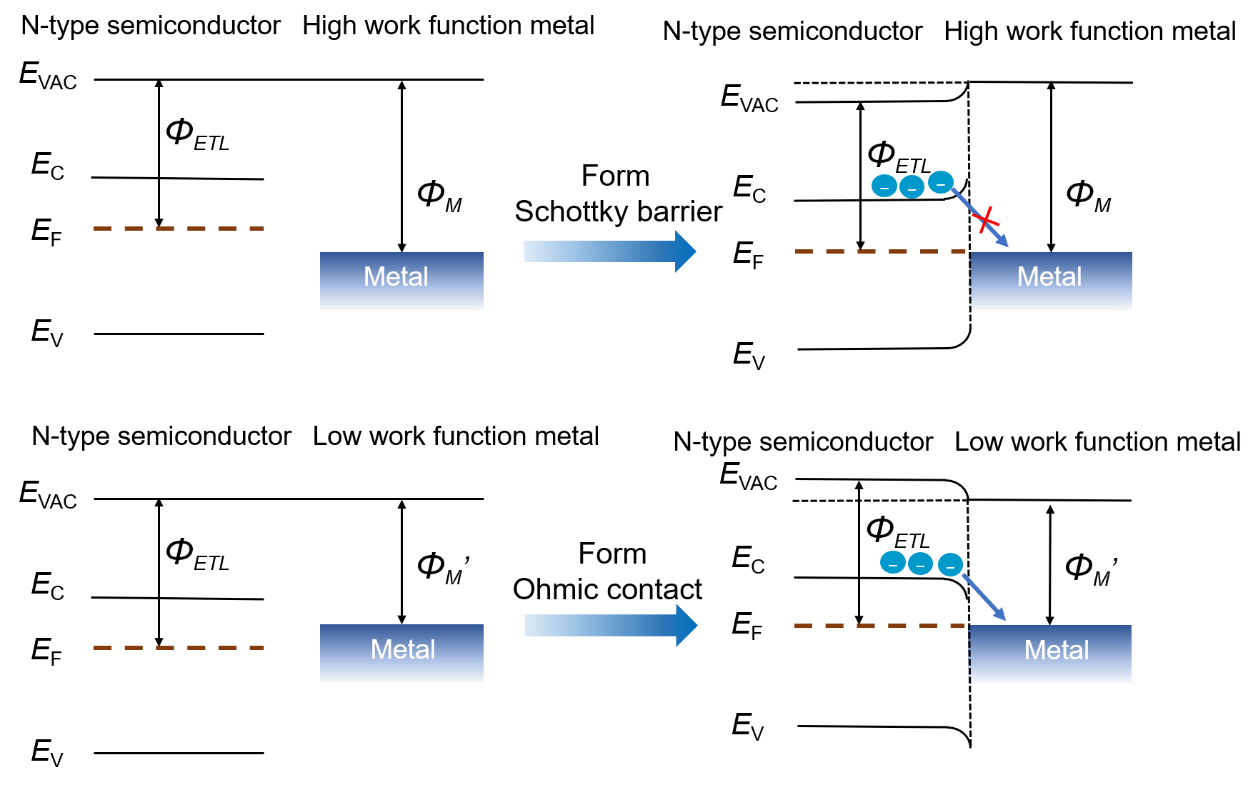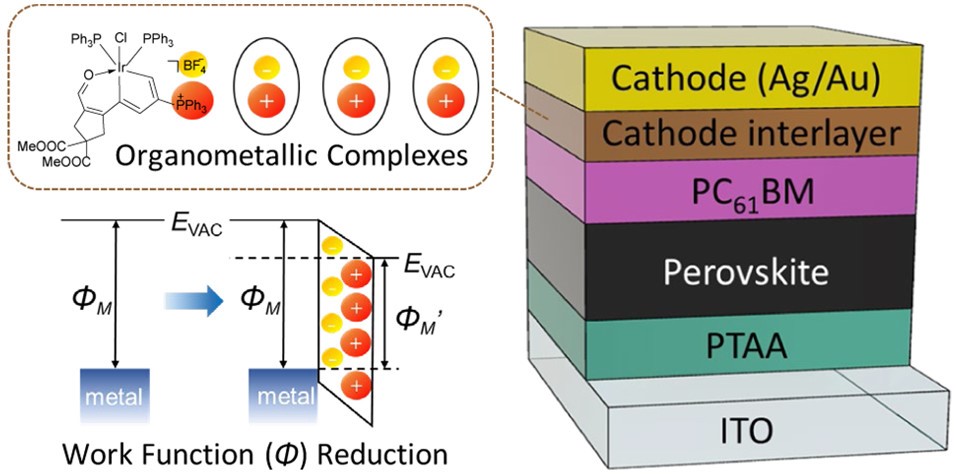SUSTech researchers make significant progress in cathode interfacial materials in perovskite solar cells
Jul 06, 2021
Recently, Professor Hsing-Lin Wang from the Department of Materials Science and Engineering and Professor Haiping Xia from the Department of Chemistry at the Southern University of Science and Technology (SUSTech) made significant progress on the research of cathode interfacial materials (CIL) in perovskite solar cells (PSCs), leading to a publication in the Journal of American Chemical Society (JACS), which was also selected as the front cover.

Their research paper is entitled “Tuning an electrode work function using organometallic complexes in inverted perovskite solar cells.” After publication, their work attracted great attention from international peers, and Spotlights on Recent JACS Publications gave it a featured report entitled “Organometallic Films Choose What They Let Through.”

Figure 1. The front cover of the Journal of American Chemical Society
PSCs have attracted intensive attention in recent years due to their high power-conversion efficiency and low device fabrication cost. PSCs based on an inverted structure can be integrated into a tandem device with Si solar cells, which is a more suitable way for commercialization. In inverted PSCs, the cathode commonly employs active metals (such as Ag, Cu, and Al) that encounter oxidation, which threatens the long-term stability of the device. Chemically stable metals have relatively high work function (ΦM in Figure 2) and would form the Schottky barrier at the metal-semiconductor interface, which suppresses electron transport and thus results in poor device performance.
Electrode modifying materials are a class of interfacial materials that have been used in optoelectronic devices, including organic photovoltaic cells (OPVs) and PSCs to tune the electrode work function. Low work function (ΦM’ in Figure 2) metals enabled by the CIL modification would form Ohmic contact, enhancing the electron’s transport and improving the device performance. However, it remains a challenge for current CIL materials to enable high-WF metals (e.g., Au) to be used as cathodes to achieve PSCs with superior PCE and long-term stability.

Figure 2. Illustration of energy band alignment and electrons transport in the cases of high/low work function metals before/after contact with electron transport layers
The researchers designed and synthesized a series of Carbolong-derived organometallic complexes, revealed the mechanism of how these materials reduce the work function of metals, and employed them as the CIL in inverted PSCs, as exhibited in Figure 3. This work showed that the organometallic complexes containing anions and cations are prone to form anion-cation dipoles on the metal surface, hence drastically reducing the metal’s WF.
Photovoltaic devices based on an Ag cathode, which was modified with these organometallic complexes, received a boosted PCE up to 21.29% and a remarkable fill factor that reached 83.52%, which are attributed to the dipole-enhanced carrier transport. The environmental stability of PSCs was further improved after employing Au as a cathode with these organometallic complexes. These novel CIL materials could provide a cost-efficient way to produce efficient solar cells, not only for power-generating plants but also for light-emitting devices and thin-film transistors.

Figure 3. Organometallic complexes tune cathode work function in inverted perovskite solar cells
The first author of this paper is Jiantao Wang, a Ph.D. candidate in the collaborative program with the Hong Kong University of Science and Technology. Dr. Jinhua Li from the Department of Chemistry at SUSTech and Dr. Yecheng Zhou from the Department of Materials Science and Engineering at Sun Yat-sen University are the co-first authors. Professor Hsing-Lin Wang and Professor Haiping Xia are corresponding authors. The authors acknowledge the funding support from the National Natural Science Foundation of China (NSFC), the Key-Area Research and Development Program of Guangdong Province, Shenzhen Basic Research Fund, and the Guangdong Provincial Key Laboratory of Energy Materials for Electric Power.
Related links:
JACS paper: https://doi.org/10.1021/jacs.1c02118
Spotlights on Recent JACS Publications featured report: https://pubs.acs.org/doi/10.1021/jacs.1c04602
Latest News
Related News












